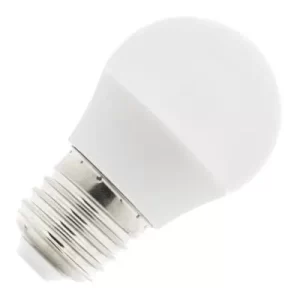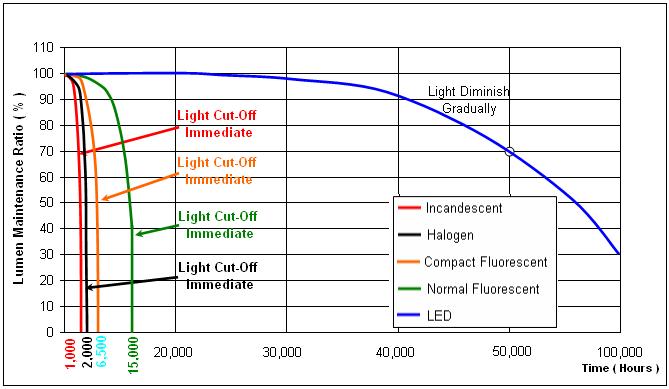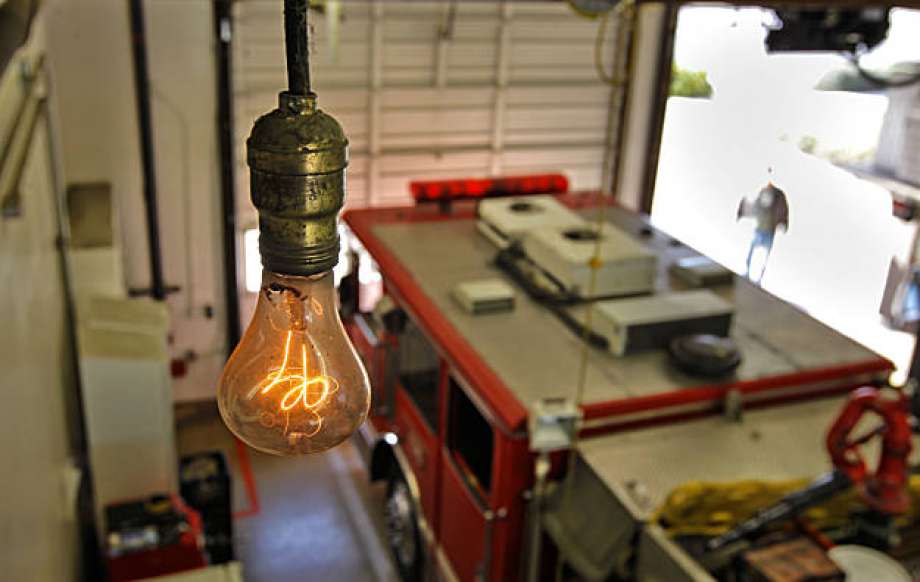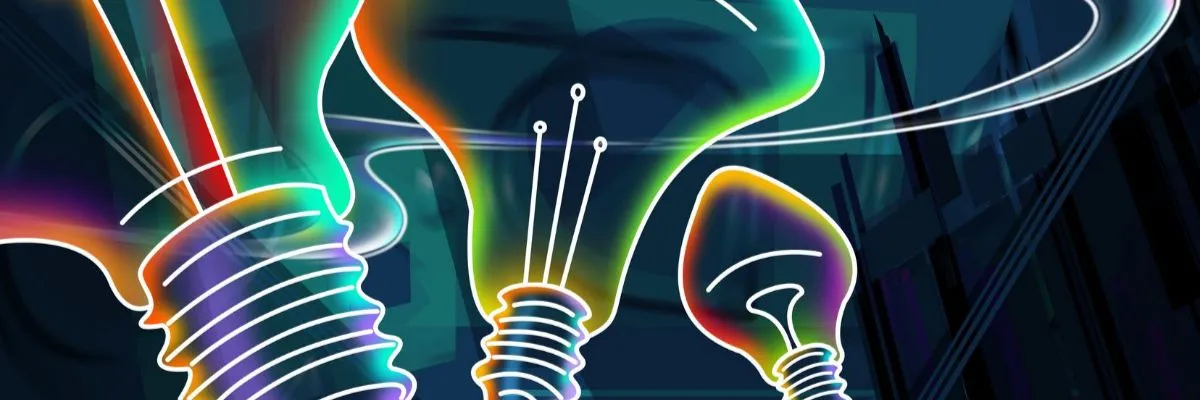The lifespan of a bulb is one of the main aspects to consider when choosing one product over another. Longer lifespan means buying fewer bulbs to replace the ones that burn out. But… What is the lifespan of a bulb and how is it measured? We are going to compare different lighting types that can be present in most homes and businesses. We will also look at some bulbs that are famous for their longevity.
Incandescent bulbs
Traditionally, incandescent bulbs have a life expectancy of just 1,200 hours. This meant that, with just 4 hours of use per day, buying a bulb in January meant buying another one before November of the same year.
Although they had a certain strength in case of temperature changes, they were physically fragile. On the other hand, they were not very efficient, as most of the energy they consume is lost as heat.
This type of lighting started to be phased out in the EU as a consequence of the European Parliament’s energy efficiency directive Ecodesign 2009/125/EC.
Energy Saving Bulbs
Since their worldwide introduction in the early 1980s, they have offered an option to reduce electricity consumption and were more durable. The lifespan of an energy-saving bulb is up to 10,000 hours. However, they have certain drawbacks that make them far from being an alternative for the future.
They are highly sensitive to changes in temperature and humidity. There is a certain delay in the bulb switching on and it also takes some time for the bulb to reach maximum brightness. In addition, frequent switching on and off cycles reduce the lifetime of the bulb.
Finally, their main problem is that they contain mercury, a highly polluting material.
LED lighting
LED bulbs are now a reality in our daily lives. They offer the longest durability, between 30,000 and 50,000 working hours or more. They are made of very durable materials and are only sensitive to high temperatures. They light up instantly and do not suffer from frequent switching on and off.
On the other hand, they are the most efficient and lack environmentally aggressive elements. Their great disadvantage was the price but, nowadays, LEDs are available for little over a pound, such as the 5W E27 A60 LED bulb.

What is the actual lifespan of a light bulb and how is it calculated?
Unlike what we might think of as the lifespan of a light bulb or LED lamp, this does not refer to how long it will take for it to stop lighting or fade. It is, in fact, the length of time it takes to lose performance.
Por tanto, si tenemos una luminaria LED con una vida útil de 30.000 horas, no va a dejar de funcionar pasado este periodo de tiempo. Sencillamente Therefore, if we have an LED luminaire with a lifetime of 30,000 hours, it will not stop working after this period of time. It will simply stop lighting with the same intensity. It should be noted that, as we indicated in the article where we talked about the steps to follow when choosing an LED bulb, luminosity is measured in lumens (lm).
Take for example the Philips UFO 200W 120lm/W LED UFO Bell with 60° Special Optics, a fantastic example of industrial LED lighting. Its data sheet states that it has a lifespan of “50,000 hours L70”. This means that after this period of time the fitting retains at least 70% of its brightness. In this example we would go from the original 21,269 lumens to almost 15,000, a value still higher than that of a halogen lamp of more than 900W.

Certainly, the lifespan value of an LED bulb is obtained statistically. It is not feasible to carry out a real test (50,000 hours is equivalent to almost 6 years) to assess how many hours have passed until, for example, 50% of a sufficiently large sample of LED bulbs reduce their luminosity to 70% of the initial brightness. On the other hand, there are external conditions such as the quality of the installation or the power supply itself that can negatively affect the electronics and burn out the LED.
A few century-old light bulbs… or nearly so
We will now take a brief look at the 5 longest-lived light bulbs in history.
The fifth longest-lasting was at Martin & Newby, a shop in Ipswich, England, which is estimated to date from the 1930s and was in operation until 2001.
The fourth bulb is located in a fire station in Magnum, Oklahoma, and its first use dates back to the late 1920s.
Gasnick Supply, a New York shop, was home to the bulb that takes the bronze in this small ranking. Installed in 1912, according to shop owner Jack Gasnick, it was in operation until at least 2003 when the building where it was located was demolished.
Silver goes to what was considered the world’s longest-lasting light bulb, although it held the title for only two years. Originally installed in the Byers Opera House in 1908, it has been in a museum since the demolition of its original site.
At the top of the podium is a true celebrity among light bulbs. It is endorsed by organisations such as the Guinness Book of Records and even General Electrics as the longest-lived light bulb in history. Located in a fire station in Livermore (California), the “century-old bulb” was installed in 1901 and has passed through at least four different locations until its current location. It was manufactured by the Shelby Electric Company.

Although it has been extensively studied, it is not clear why it still works after so long. Many claim that things were simply made better in the past or that we are falling victim to programmed obsolescence. Others simply point to the fact that despite being a 30W or 60W bulb, it is not entirely clear, it is working at 4W and that because of this, and because it has its own independent power supply system, it has been able to last so long.
Be that as it may, if we want to benefit from quality and energy-efficient lighting, LED lighting is the only viable alternative. And as you can see in our online lighting shop, price is no longer an issue.


